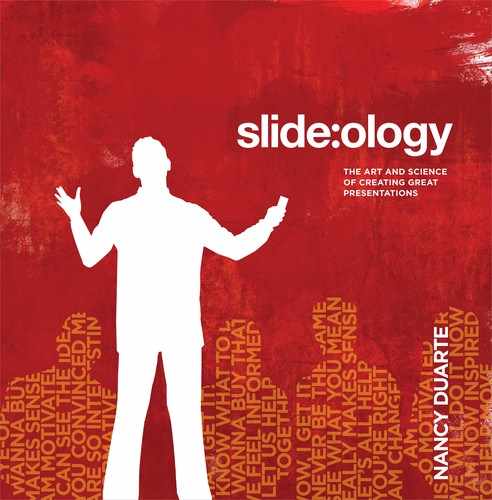
88 slide:ology
Designing Effective Slides
Arrangement
contrast
hierarchy
unity
space
proximity
flow
Visual Elements
background
color
text
images
Movement
timing
pace
distance
direction
eye flow
Approaching the design of a slide can seem daunting. Effective slide design hinges on
mastery of three things: arrangement, visual elements, and movement. These will be
covered in the following chapters:
Presentations broadcast information to an audience in
much the same way as a radio transmission. Thus, think
of a presentation’s slides as a signal. Can you remember
when your favorite junior high song came on the radio
but there was so much static interference that you
turned off the radio rather than hear your fond memories
garbled? Strength and clarity determine how well infor-
mation is conveyed.
Like a poor radio signal, slides are susceptible to inter-
ference and noise, clouding the intended message and
compromising the audience’s ability to discern meaning
and intent.
The arrangement, visual elements, and movement of a
slide function either as a signal, delivering information
clearly and directly, or as noise, interfering with the message
and causing the viewer to tune out.
In the vast majority of cases, a slide fails not due to
stylistic issues, but due to its fundamental construction.
Thus, the most important tool in a presenter’s arsenal
is a strong familiarity with the mechanics of a well-
designed slide.
Thinking Like a Designer 89
“People have a hard time coping with excessive cogni-
tive strain. There is simply a limit to a person’s ability
to process new information efficiently and effectively.
Understanding can be hard enough without the exces-
sive and nonessential bombardment by our visuals
that are supposed to be playing a supportive role.”
Garr Reynolds
Author, Presentation Zen

..................Content has been hidden....................
You can't read the all page of ebook, please click here login for view all page.
